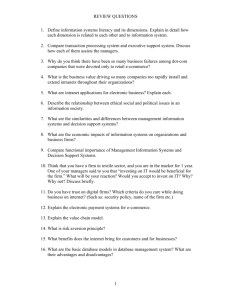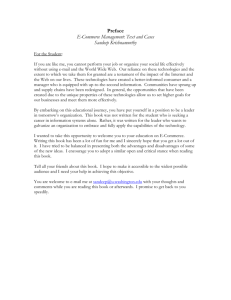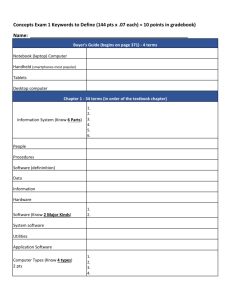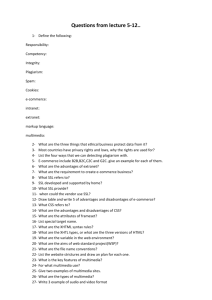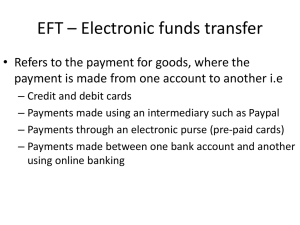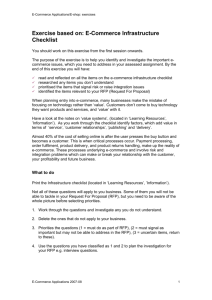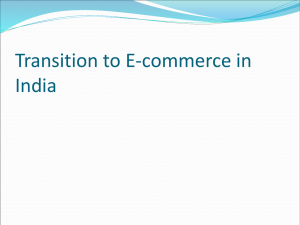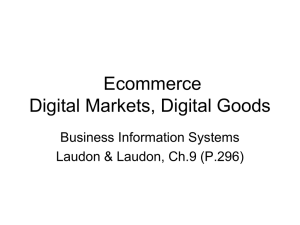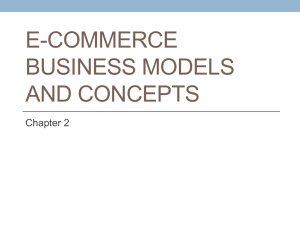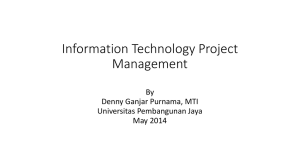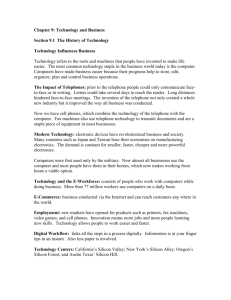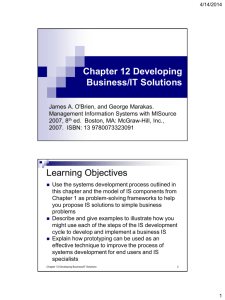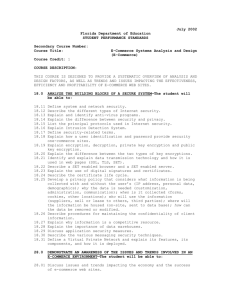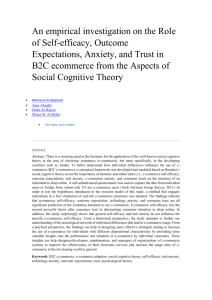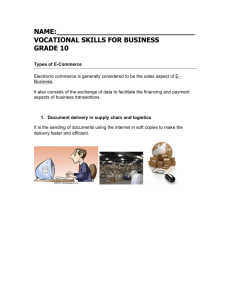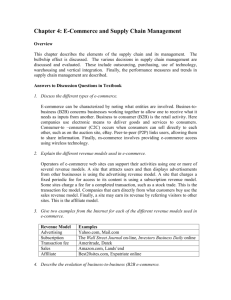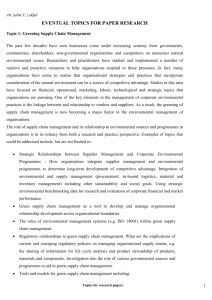Chapter 12 Implementation and maintenance
advertisement
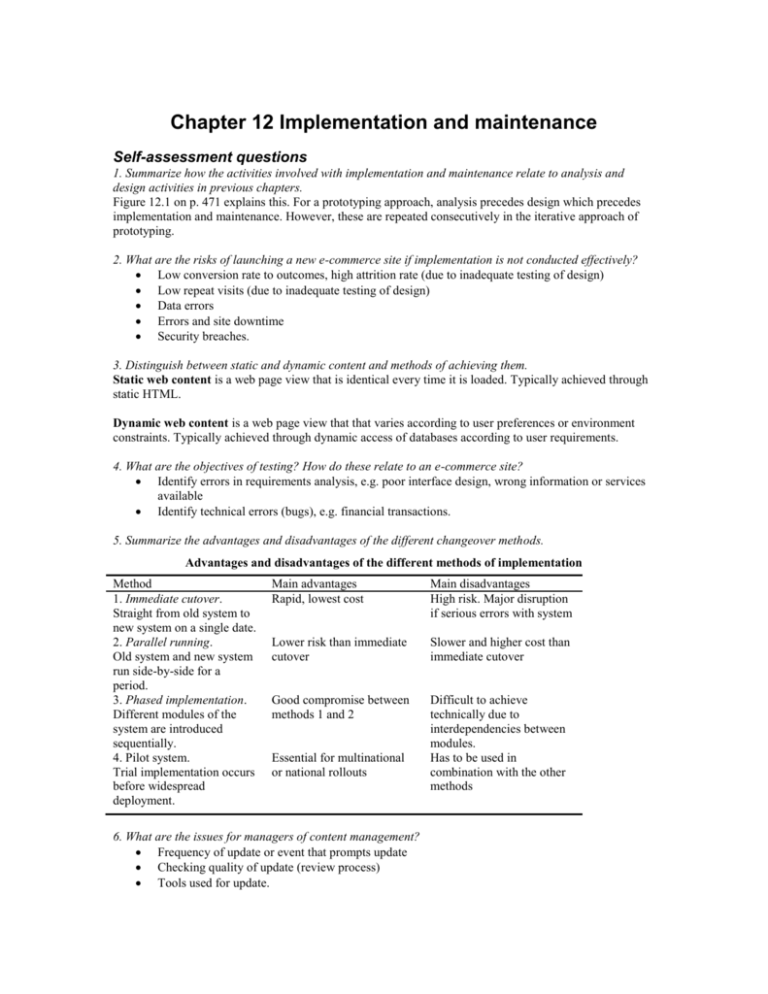
Chapter 12 Implementation and maintenance Self-assessment questions 1. Summarize how the activities involved with implementation and maintenance relate to analysis and design activities in previous chapters. Figure 12.1 on p. 471 explains this. For a prototyping approach, analysis precedes design which precedes implementation and maintenance. However, these are repeated consecutively in the iterative approach of prototyping. 2. What are the risks of launching a new e-commerce site if implementation is not conducted effectively? Low conversion rate to outcomes, high attrition rate (due to inadequate testing of design) Low repeat visits (due to inadequate testing of design) Data errors Errors and site downtime Security breaches. 3. Distinguish between static and dynamic content and methods of achieving them. Static web content is a web page view that is identical every time it is loaded. Typically achieved through static HTML. Dynamic web content is a web page view that that varies according to user preferences or environment constraints. Typically achieved through dynamic access of databases according to user requirements. 4. What are the objectives of testing? How do these relate to an e-commerce site? Identify errors in requirements analysis, e.g. poor interface design, wrong information or services available Identify technical errors (bugs), e.g. financial transactions. 5. Summarize the advantages and disadvantages of the different changeover methods. Advantages and disadvantages of the different methods of implementation Method 1. Immediate cutover. Straight from old system to new system on a single date. 2. Parallel running. Old system and new system run side-by-side for a period. 3. Phased implementation. Different modules of the system are introduced sequentially. 4. Pilot system. Trial implementation occurs before widespread deployment. Main advantages Rapid, lowest cost Main disadvantages High risk. Major disruption if serious errors with system Lower risk than immediate cutover Slower and higher cost than immediate cutover Good compromise between methods 1 and 2 Difficult to achieve technically due to interdependencies between modules. Has to be used in combination with the other methods Essential for multinational or national rollouts 6. What are the issues for managers of content management? Frequency of update or event that prompts update Checking quality of update (review process) Tools used for update. 7. What are the main elements of an e-commerce site measurement plan? The framework described in the text is: Channel promotion Channel behaviour Channel satisfaction Channel outcomes Channel profitability. 8. What are the elements of a budget for an e-commerce site enhancement? Tangible business benefits: 1 Reduced costs 2 Increased revenue. Intangible business benefits: 3 Faster time to market 4 Improved customer satisfaction/brand equity. Tangible costs: 1 Physical costs 2 Planning costs 3 Implementation costs including staff, hardware and software 4 Operational costs including staff, hardware and software.

